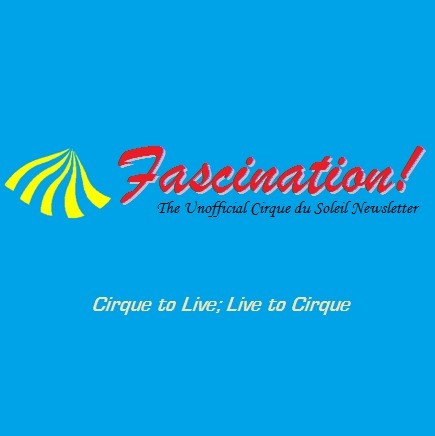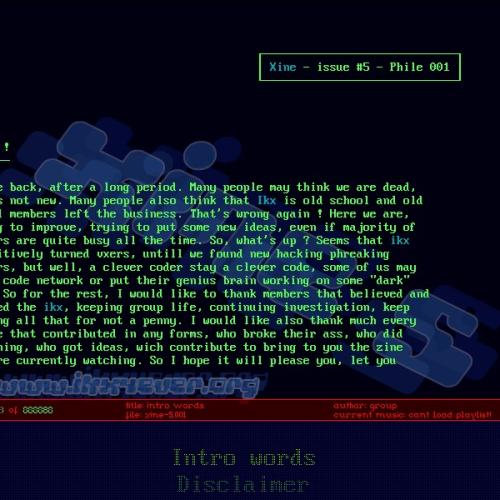Copy Link
Add to Bookmark
Report
AIList Digest Volume 4 Issue 211

AIList Digest Friday, 10 Oct 1986 Volume 4 : Issue 211
Today's Topics:
Queries - Line-Drawing Recognition & Cognitive Neuroscience,
Schools - Cognitive Science at SUNY,
AI Tools - XILOG & Public-Domain Prolog,
Review - Canadian Artificial Intelligence,
Logic Programming - Prolog Multiprocessors Book,
Learning - Multilayer Connectionist Learning Dissertation
----------------------------------------------------------------------
Date: 9 Oct 86 07:52:00 EDT
From: "CUGINI, JOHN" <cugini@nbs-vms.ARPA>
Reply-to: "CUGINI, JOHN" <cugini@nbs-vms.ARPA>
Subject: request for references on drawings
I'd appreciate getting references to any work on automatic
comparison or classification of drawings, especially technical
drawings and blueprints. For instance, a system which, when
presented with a blueprint, can recognize it as a left-handed
widget, etc. Please send replies directly to me - thanks.
John Cugini <Cugini@NBS-VMS>
------------------------------
Date: Mon, 6 Oct 86 13:17:40 edt
From: klahr@nyu-csd2.arpa (Phillip Klahr)
Subject: Cognitive Neuroscience
For my Neuroscience qualifying exam, I am looking for articles,
books, or reviews that discuss the interface/contribution of AI research on
vision and memory to "Cognitive Neuroscience". By Cognitive Neuroscience, I
mean the study of theories and methods by which the different parts of the
brain go about processing information, such as vision and memory. To give you
an idea of "ancient works" I am starting with, I am already looking at:
Wiener's "Cybernetics", von Neumann's "The Computer and the Brain",
Rosenblatt's "Principles of Neurodynamics", Arbib's "Metaphorical Brain", and
Hebb's "The Organization of Behavior".
Some of the neurophysiology work I am looking at already includes work by
Mortimer Mishkin and Larry Squire on memory in the monkey.
Any pertinent references you can think of will be very much appreciated, and,
if there is any interest, I will post a summary of any responses I get.
Thank you very much.
Phillip Klahr Albert Einstein College of Medicine
klahr@NYU-CSD2.ARPA UUCP: {allegra, seismo, ihnp4} !cmcl2!csd2!klahr
------------------------------
Date: Mon, 29 Sep 86 10:46:55 EDT
From: "William J. Rapaport" <rapaport%buffalo.csnet@CSNET-RELAY.ARPA>
Subject: Re: Cognitive Science Schools
In article <8609221503.AA15901@mitre.ARPA> schwamb@MITRE.ARPA writes:
>Well, now that some folks have commented on the best AI schools in
>the country, could we also hear about the best Cognitive Science
>programs? Cog Sci has been providing a lot of fuel for thought to
>the AI community and I'd like to know where one might specialize
>in this.
>
>Thanks, Karl (schwamb@mitre)
The SUNY Buffalo Graduate Group in Cognitive Science was formed to
facilitate cognitive-science research at SUNY Buffalo. Its activities
have focused on language-related issues and knowledge representation.
These two areas are well-represented at SUNY Buffalo by the research
interests of faculty and graduate students in the Group.
The Group draws its membership primarily from the Departments of
Computer Science, Linguistics, Philosophy, Psychology, and Communicative
Disorders, with many faculty from other departments (e.g., Geography,
Education) involved on a more informal basis. A current research project
on deixis in narrative is being undertaken by a research subgroup.
While the Group does not offer any degrees by itself, a Cognitive
Science "focus" in a Ph.D. program in one of the participating
disciplines is available.
There is also a Graduate Group in Vision.
For further details, see AI Magazine, Summer 1986, or contact:
William J. Rapaport
Assistant Professor of Computer Science
Co-Director, Graduate Group in Cognitive Science
Dept. of Computer Science, SUNY Buffalo, Buffalo, NY 14260
(716) 636-3193, 3180
uucp: ..!{allegra,decvax,watmath,rocksanne}!sunybcs!rapaport
csnet: rapaport@buffalo.csnet
bitnet: rapaport@sunybcs.bitnet
------------------------------
Date: 1 Oct 86 20:02:38 GMT
From: mcvax!unido!ecrcvax!bruno@seismo.css.gov (Bruno Poterie)
Subject: XILOG
Well, I know of at least one Prolog system on PC/AT which is:
- fully C&M compatible,
to the exception of the top-level mode
(consults by default (terms ended with a dot),
executes on request (terms ended with a question mark))
- all defined C&M predicates,
i/o, program manipulation, term scanning & construction,
integer and float arithmetics, ...
plus the following features:
- full window, semi-graphics & color management
- modularity for debugging, program handling, etc..
( but *no* separate dictionaries)
through a hierarchy of "zone"
- on-line precise help
- on-line clause editor
- complete typage mechanism, allowing full object definition,
constraint checking, etc...
- functional mechanism, allowing each call to return any prolog term
as a return value through an accumulator (bactracked/trailed)
(the arithmetic is implemented, using this mechanism,
and you may extend it as you wants)
- non-bactrackable global cells and arrays
- backtracking arrays, with functional notation and access
- access to MSDOS
- sound system
and some others less (sic) important goodies, like a debugger based
on the Box model, etc...
oh, I forgot:
under development, and rather advanced by now, are:
- an incremental compiler to native code with incremental linking
(with full integration with the interpreter, of course)
- an interface to C programs
- a toolkit for development of applications, with an utilities library
- and maybe a message sending mechanism (but I'm not sure for it)
The name of this system is:
XILOG
and it is made and distributed by (the Research Center of) BULL,
the biggest french computer compagny.
if interested, contact:
CEDIAG
BULL
68, route de Versailles
F-78430 Louveciennes
FRANCE
or:
Dominique Sciamma
(same address)
don't fear, they do speak english there! :-)
P.S.: I precise that I have no commercial interest at all in this product,
but I really think that this XILOG is the best Prolog for micro I ever met.
================================================================================
Bruno Poterie # ... une vie, c'est bien peu, compare' a un chat ...
ECRC GmbH # tel: (49)89/92699-161
Arabellastrasse 17 # Tx: 5 216 910
D-8000 MUNICH 90 # mcvax!unido!ecrcvax!bruno
West Germany # bruno%ecrcvax.UUCP@Germany.CSNET
================================================================================
------------------------------
Date: 8 Oct 86 20:26:15 GMT
From: ucdavis!ucrmath!hope!fiore@ucbvax.Berkeley.EDU (David Fiore)
Subject: Re: pd prolog
> Xref: ucbvax net.micro:451 net.micro.pc:821 net.ai:91
>
> Does anyone have the public domain prolog package discussed in this month's
> BYTE magazine?
>
> John E. Jacobsen
> University of Wisconsin -- Madison Academic Computing Center
I have a copy of pdprolog here with me. It is the educational version.
I don't know if that is the one described in BYTE as I haven't read that
magazine lately.
||
|| David Fiore, University of California at Riverside.
=============
|| Slow mail : 1326 Wheaton Way
|| Riverside, Ca. 92507
|| E-Mail
|| UseNet : ...!ucdavis!ucrmath!hope!fiore
|| BITNET : consult@ucrvms
Have another day!
"...and at warp eight, we're going nowhere mighty fast"
------------------------------
Date: WED, 20 apr 86 17:02:23 CDT
From: E1AR0002%SMUVM1.BITNET@WISCVM.WISC.EDU
Subject: Canadian Artificial Intelligence/ September 1986
Summary No. 9
Report on current budget and increase in dues
The Dalhousie Business School got a Sperry Explorer Lisp Machine
and a copy of KEE. They are developing a system to manage foreign
debts and plan an estimator for R&D projects, intelligent computer
aided instruction and auditing.
Xerox Canada has set up an AI support work
Logicware has been acquired by the Nexa Group
British Columbia Advanced Systems Institute will be set up to do
research on AI, robotics, microelectronics.
__________________________________________________________________________
Two assessments on the Japanese Fifth Generation project:
ICOT is developing AI systems for fishing fleets, train control,
microchip design, natural language transition. There are 600 researchers
working on fifth generation projects and 600 on robotics.
1986-1988 funding is 102 billion yen and 1982-92 funding is 288 billion.
The English to Japanese system will require post-editing and applies
standard techniques.
The Japanese have abandoned 'Delta', their parallel inference engine
is 'gathering dust' They alledgedly threw 'hardware engineers' into
a Prolog environment for which they 'had no background or interest'
__________________________________________________________________________
Report on Natural Language Understanding Research at University of
Toronto
Reviews of Bertholt Klaus Paul Horn's "Robot Vision"
Theoretical Aspects of Reasoning About Knowledge: Proceedings of the 1986
Conference
------------------------------
Date: Tue, 7 Oct 86 16:08:19 EST
From: munnari!nswitgould.oz!michaelw@seismo.css.gov
Subject: Book - Prolog Multiprocessors
A book is soon to appear, by Michael J. Wise, entitled "Prolog
Multiprocessors". It is being published by Prentice-Hall (Australia).
In a nutshell, the book examines the execution of Prolog on a
multiprocessor.
Starting from a survey of some current multiprocessor
architectures, and a review of what is arguably the most influential
counter-proposal - the "data-flow" model, a model is proposed for
executing Prolog on a multiprocessor. Along with the model goes a
language based on Prolog. The model and the language are called
EPILOG. EPILOG employs both AND and OR parallelism. Results are then
reported for the simulated execution of some Prolog programs rewritten
in the EPILOG language. The book concludes with an extensive survey
of other multiprocessor implementations of Prolog.
The book will be available in Australia from mid November, and in
US/UK/Europe roughly eight weeks later. A list of the Chapter
headings follows. A more detailed list can be obtained from your
local P-H representative, or by e-mailing to me directly.
TABLE OF CONTENTS
Foreword by J. Alan Robinson
Preface
1. Parallel Computation and the Data-Flow Alternative
2. Informal Introduction to Prolog
3. Data-Flow Problems and a Prolog Solution
4. EPILOG Language and Model
5. Architectures for EPILOG
6. Experimenting with EPILOG Architectures - Results and Some
Conclusions
7. Related Work
Appendix 1 Data-Flow Research - the First Generation
Appendix 2 EBNF Specification for EPILOG
Appendix 3 EPILOG Test Programs
Appendix 4 Table of Results
------------------------------
Date: Thu, 9 Oct 86 10:21:18 EDT
From: "Charles W. Anderson" <cwa0%gte-labs.csnet@CSNET-RELAY.ARPA>
Subject: Dissertation - Multilayer Connectionist Learning
The following is the abstract from my Ph.D. dissertation
completed in August, 1986, at the University of Massachusetts, Amherst.
Members of my committee are Andrew Barto, Michael Arbib, Paul Utgoff,
and William Kilmer. I welcome all comments and questions.
Chuck Anderson
GTE Laboratories Inc.
40 Sylvan Road
Waltham, MA 02254
617-466-4157
cwa0@gte-labs
Learning and Problem Solving
with Multilayer Connectionist Systems
The difficulties of learning in multilayered networks of
computational units has limited the use of connectionist systems in
complex domains. This dissertation elucidates the issues of learning in
a network's hidden units, and reviews methods for addressing these
issues that have been developed through the years. Issues of learning
in hidden units are shown to be analogous to learning issues for
multilayer systems employing symbolic representations.
Comparisons of a number of algorithms for learning in hidden
units are made by applying them in a consistent manner to several tasks.
Recently developed algorithms, including Rumelhart, et al.'s, error
back-propagation algorithm and Barto, et al.'s, reinforcement-learning
algorithms, learn the solutions to the tasks much more successfully than
methods of the past. A novel algorithm is examined that combines
aspects of reinforcement learning and a data-directed search for useful
weights, and is shown to out perform reinforcement-learning algorithms.
A connectionist framework for the learning of strategies is
described which combines the error back-propagation algorithm for
learning in hidden units with Sutton's AHC algorithm to learn evaluation
functions and with a reinforcement-learning algorithm to learn search
heuristics. The generality of this hybrid system is demonstrated
through successful applications to a numerical, pole-balancing task and
to the Tower of Hanoi puzzle. Features developed by the hidden units in
solving these tasks are analyzed. Comparisons with other approaches to
each task are made.
------------------------------
End of AIList Digest
********************




















